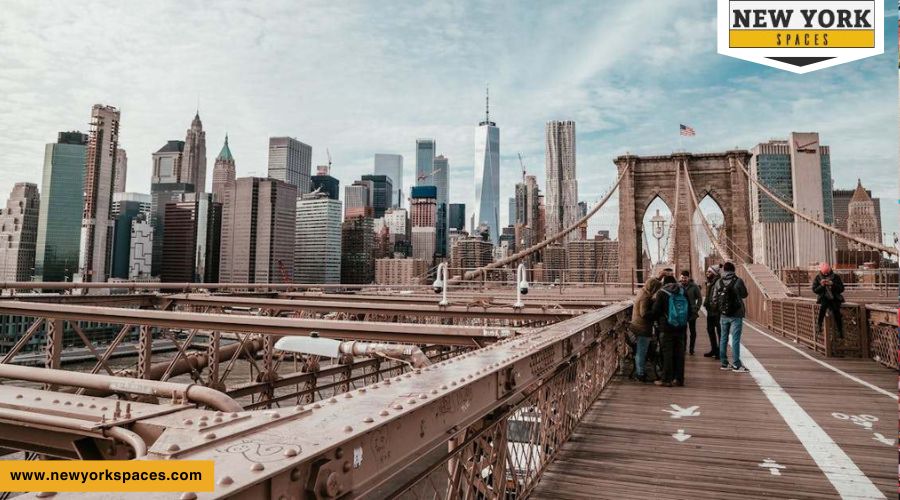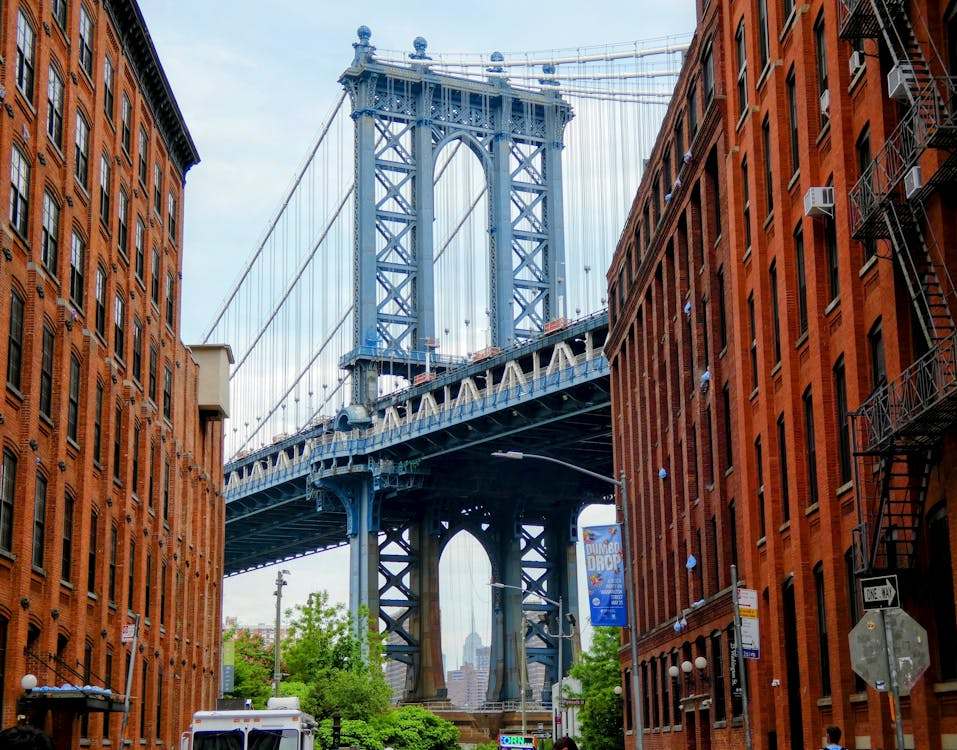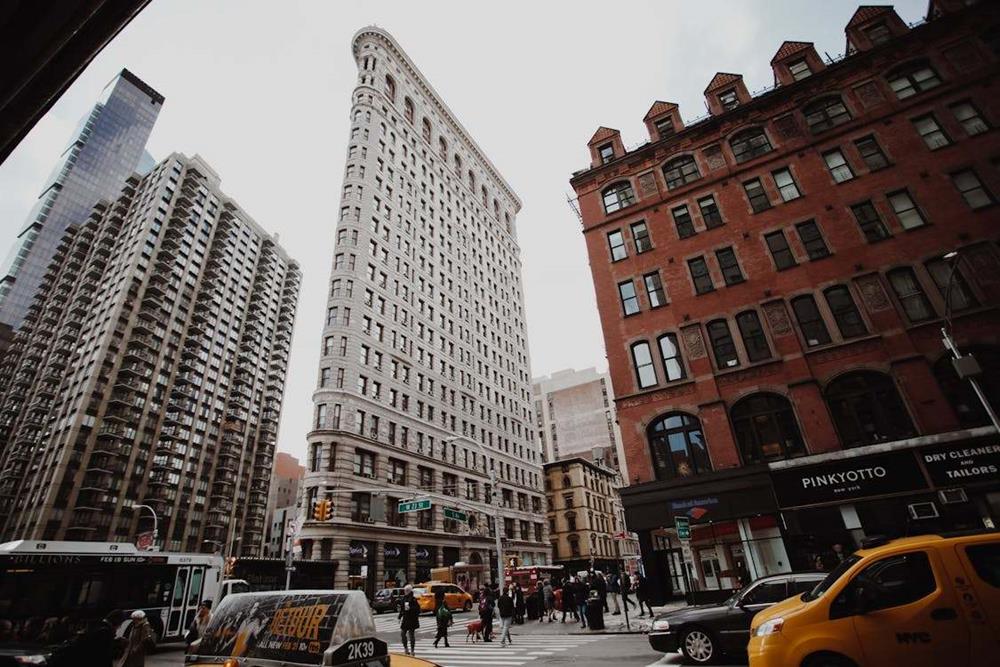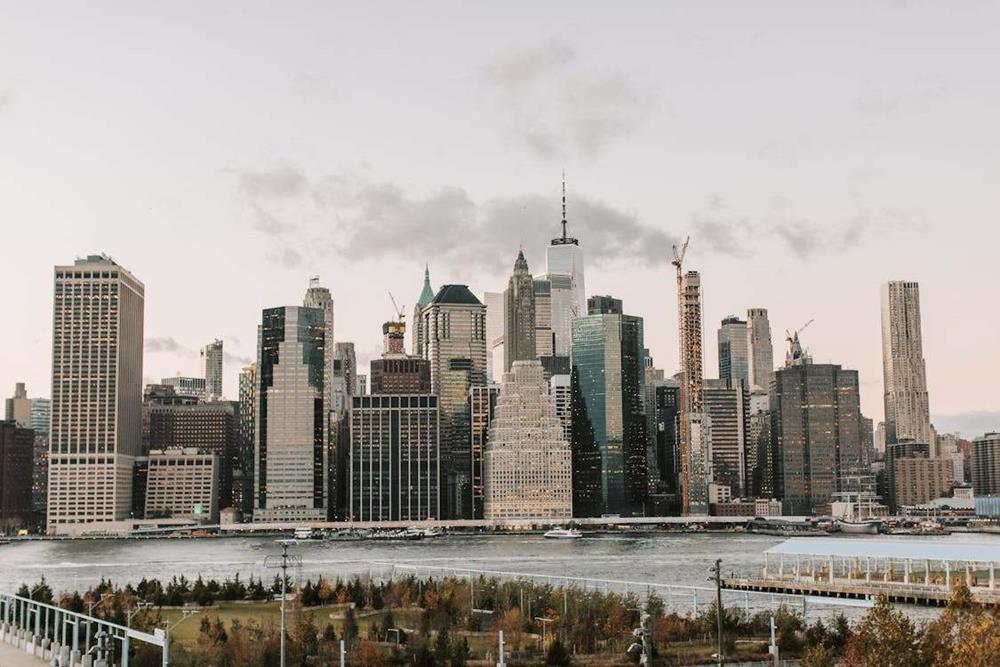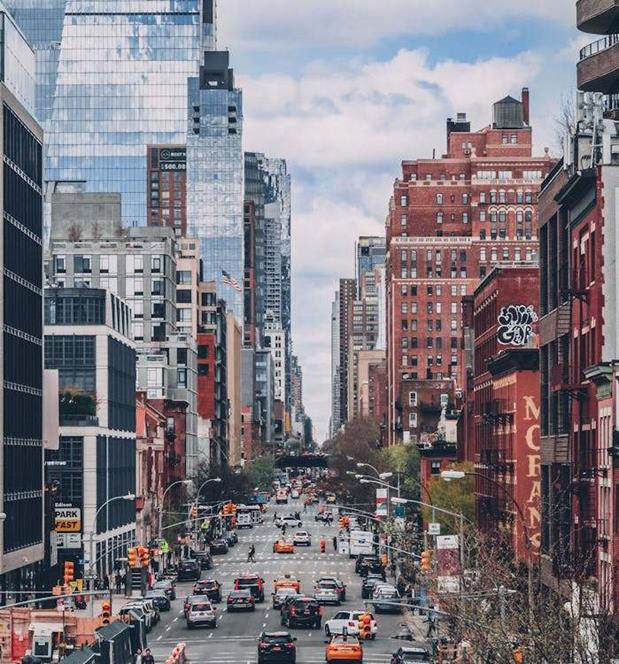New York City, a bustling metropolis known for its towering skyscrapers, vibrant culture, and dense population, faces an array of environmental challenges, not least among them the issue of air quality. As the city continues to grow and evolve, the question of whether air quality and pollution are significant concerns for its residents and policymakers alike has come under increasing scrutiny.
The State of Air Quality in New York City
The Journey Towards Cleaner Air
New York City’s trajectory towards improved air quality is marked by robust environmental regulations, a shift towards cleaner fuel sources, and comprehensive initiatives aimed at minimizing emissions from diverse origins. Legislative measures aimed at shrinking the city’s carbon footprint, alongside the embrace of renewable energy, have been instrumental in propelling this positive change.
Persistent Pollutants and Their Impact
Despite significant strides in air quality enhancement, New York remains confronted with persistent pollutants that compromise the health of its inhabitants. The dense urban environment exacerbates the presence of harmful pollutants such as particulate matter, nitrogen dioxide, sulfur dioxide, and ozone, each posing distinct health risks.
Particulate Matter – A Microscopic Menace
Particulate matter, encompassing PM2.5 and PM10, consists of tiny, airborne particles that can deeply penetrate the respiratory system and bloodstream. Originating from vehicle emissions, construction, and industrial activities, these particles can linger in the air, heightening the risk of respiratory and cardiovascular diseases.
- Nitrogen Dioxide: Produced primarily by vehicular and industrial combustion, nitrogen dioxide is a key contributor to urban smog and acid rain. This reddish-brown gas not only deteriorates air quality but also aggravates respiratory conditions, impacting the overall health of city residents.
- Sulfur Dioxide: Sulfur dioxide emissions, stemming from the burning of fossil fuels, play a significant role in acid rain formation, with detrimental effects on ecosystems and human health. This colorless, pungent gas is particularly harmful to individuals with asthma and other respiratory conditions.
- Ozone: Ground-level ozone, or smog, forms through chemical reactions between nitrogen oxides and volatile organic compounds in sunlight. Unlike its protective upper atmosphere counterpart, ground-level ozone is a potent pollutant that can cause respiratory distress and exacerbate chronic lung diseases.
Vulnerable Populations at Risk
The adverse health effects of New York City’s air pollution are particularly pronounced among vulnerable groups, including children, the elderly, and those with pre-existing health conditions. Exposure to polluted air can lead to a spectrum of health issues, from acute respiratory symptoms to long-term diseases, highlighting the critical need for continued air quality improvement efforts.
Towards a Cleaner, Healthier New York
In response to these ongoing challenges, New York City is steadfast in its commitment to advancing air quality improvements. Through innovative policies, community engagement, and sustainable practices, the city is on a path towards achieving a healthier environment for its current and future residents. The quest for cleaner air is a dynamic journey, reflecting New York’s dedication to environmental stewardship and public health.
Sources of Pollution in New York City
New York City’s air quality issues stem from a variety of sources, each contributing its share of pollutants to the urban atmosphere. Understanding these sources is crucial for developing effective strategies to combat air pollution and protect public health.
- Vehicular Traffic: The bustling streets of New York City are flooded with cars, buses, trucks, and taxis, making vehicular traffic one of the most significant contributors to air pollution in the area. Manhattan, with its dense traffic and constant flow of vehicles, is particularly notorious for high levels of nitrogen dioxide (NO2) and particulate matter. Emissions from exhausts, especially in congested areas and during peak traffic hours, release a cocktail of harmful pollutants into the air, severely impacting air quality and public health.
- Heating Systems in Buildings: Many buildings in New York City, both residential and commercial, depend on heating systems that utilize oils and natural gas. Older systems and those using heavier heating oils are less efficient and emit a higher concentration of pollutants, including sulfur dioxide (SO2), particulate matter, and various other combustion by-products. These emissions are particularly problematic during the colder months when heating demand peaks, leading to increased pollution levels in the city’s air.
- Industrial Activities: While not as visually prominent as the endless streams of traffic, industrial activities within and around New York City play a substantial role in its air quality issues. Factories, power plants, and waste management facilities, among others, emit a wide range of pollutants, including volatile organic compounds (VOCs), NO2, PM2.5, and toxic substances like mercury and lead. These emissions can contribute to the formation of ground-level ozone and particulate pollution, posing health risks to the city’s inhabitants.
- Pollution Drifting from Other Regions: New York City’s air quality is not solely affected by local sources; pollution drifting in from other areas, both nearby and distant, can significantly impact the city’s air. Emissions from power plants, industrial operations, and vehicles in upstate New York, neighboring states, and even Canada can be carried by prevailing winds into the city, exacerbating local pollution levels. This transboundary pollution makes it clear that air quality is not just a local issue but a regional one that requires cooperative efforts to address.
The Role of Urban Infrastructure and Design
The city’s dense urban infrastructure and design also play a role in exacerbating air pollution. The “urban canyon” effect, where tall buildings line narrow streets, can trap pollutants at street level, reducing air circulation and slowing the dispersion of pollutants. This effect is particularly pronounced in areas with high-rise buildings and heavy traffic, leading to localized pockets of poor air quality.
Tackling the Sources of Pollution
Addressing the sources of air pollution in New York City requires a multifaceted approach that includes updating and enforcing environmental regulations, transitioning to cleaner energy sources, improving traffic management, and enhancing the energy efficiency of buildings. Innovations in transportation, such as the promotion of electric vehicles and the expansion of public transit, along with stricter emissions standards for industrial activities, can significantly reduce the city’s pollution levels. Additionally, retrofitting buildings with more efficient, cleaner heating systems and promoting green infrastructure can help mitigate the impact of heating emissions and improve air quality.
The battle against air pollution in New York City is complex, involving a wide range of sources and factors. By understanding these sources and their impacts, the city can continue to develop and implement targeted strategies to improve air quality, safeguard public health, and ensure a cleaner, healthier future for all New Yorkers.
Health Impacts of Air Pollution in New York City
The dense urban landscape of New York City, coupled with its various sources of air pollution, poses significant health risks to its residents. The effects of air pollution on health can be immediate and acute, but there are also insidious, long-term consequences that can significantly impact quality of life and longevity.
Immediate and Short-Term Health Effects
Exposure to polluted air, even for short periods, can trigger a range of adverse health reactions. Individuals with pre-existing respiratory conditions, such as asthma or chronic obstructive pulmonary disease (COPD), may experience worsening symptoms, including increased frequency and severity of attacks. Even healthy individuals can experience discomfort, such as eye irritation, coughing, throat soreness, and shortness of breath. Cardiovascular health can also be affected in the short term, with increased risks of heart attacks and other acute cardiovascular events, especially in the elderly or those with pre-existing heart conditions.
Long-Term Health Consequences
The long-term health effects of consistent exposure to air pollution are even more concerning. Prolonged inhalation of polluted air can lead to chronic respiratory diseases, including the development or exacerbation of asthma and COPD. The risk of developing lung cancer also increases, as some air pollutants, particularly fine particulate matter, contain carcinogenic compounds. Cardiovascular diseases, such as heart disease and stroke, have been linked to long-term exposure to air pollution, attributed to systemic inflammation and oxidative stress caused by pollutants.
Vulnerable Populations: Children and Pregnant Women
Children and unborn babies are particularly vulnerable to the effects of air pollution. Children growing up in areas with poor air quality may experience stunted lung growth and reduced lung function, potentially leading to chronic respiratory issues later in life. The developing bodies of children are more susceptible to environmental toxins, and their higher breathing rates relative to their body size mean they inhale more pollutants per pound of body weight than adults do.
Pregnant women exposed to high levels of air pollution face an increased risk of complications, including preterm birth and low birth weight. Some studies suggest a link between maternal exposure to air pollution and developmental issues in children, including cognitive impairments and behavioral problems.
Mental Health and Cognitive Effects
Emerging research indicates that air pollution may also impact mental health and cognitive function. Exposure to high levels of pollutants, particularly fine particulate matter, has been associated with increased rates of anxiety, depression, and other mental health disorders. Cognitive functions, including memory, attention, and intelligence, may also be adversely affected by prolonged exposure to polluted air, posing significant implications for both children and adults.
The Path Forward
Understanding the multifaceted health impacts of air pollution in New York City underscores the urgent need for continued efforts to improve air quality. Public health initiatives, stricter environmental regulations, and community awareness and action are critical in mitigating the health risks associated with air pollution. By addressing the sources of pollution and implementing sustainable urban practices, New York City can work towards a future where clean air contributes to the health and well-being of all its residents.
Innovative Measures to Enhance Air Quality in New York City
Recognizing the critical impact of air pollution on public health and the environment, New York City has embarked on a comprehensive strategy to improve air quality. These measures span various sectors, from transportation to energy use, and involve both policy-driven and community-based initiatives.
- Revamping Transportation: One of the cornerstone efforts to combat air pollution in New York City involves transforming the transportation landscape. The city has introduced stricter emissions standards for all vehicles, aiming to significantly reduce the output of harmful pollutants such as nitrogen oxides and particulate matter. In parallel, incentives for electric vehicles (EVs) have been ramped up, including tax rebates, grants for EV charging infrastructure, and the installation of charging stations across the city. This dual approach not only curtails emissions from conventional vehicles but also encourages a shift towards cleaner, electric-powered transportation.
- Transitioning to Cleaner Energy Sources: In the realm of energy, New York City has taken decisive steps to phase out the use of heavy heating oils in buildings, which are major contributors to air pollution. New regulations mandate the conversion of heating systems to utilize cleaner fuels, such as natural gas or biofuels, which emit fewer pollutants. This transition is complemented by initiatives aimed at boosting the energy efficiency of buildings, including retrofitting older structures with modern, more efficient heating, ventilation, and air conditioning (HVAC) systems, and incorporating green building standards in new constructions.
- Greening the Urban Environment: Recognizing the natural ability of green spaces to improve air quality, New York City has embarked on ambitious urban forestry and green space projects. The planting of trees and the creation of green roofs not only absorb CO2 and other pollutants but also help to cool the urban environment, reducing the “heat island” effect that can exacerbate air pollution levels. Parks, greenways, and community gardens are being expanded and integrated into the urban fabric, providing residents with clean, green spaces for recreation and relaxation.
- Policy and Community Engagement: At the policy level, New York City’s commitment to sustainability is evident in comprehensive environmental plans that set ambitious targets for air quality improvement, greenhouse gas reduction, and renewable energy adoption. These policies are supported by community engagement initiatives that encourage residents to participate in environmental conservation efforts, from tree planting to energy conservation campaigns.
The multifaceted approach New York City has adopted to tackle air pollution reflects a deep understanding of the complex nature of this issue. By addressing transportation, energy, and urban planning, the city is making strides towards cleaner air and a more sustainable future. Continued innovation, policy enforcement, and community involvement are key to maintaining this momentum and ensuring that New York City can meet its environmental goals, safeguarding the health and well-being of its residents for generations to come.
Navigating the Future of Air Quality in New York City
New York City stands at a critical juncture in its ongoing battle against air pollution. The achievements to date mark significant milestones, but the journey ahead is fraught with challenges, many of which are magnified by the looming specter of climate change. Rising global temperatures, increased frequency of heatwaves, and more extreme weather events pose new risks, potentially undermining the gains made in air quality and public health.
Climate Change and Air Quality
The relationship between climate change and air quality is intricate and multifaceted. Higher temperatures can accelerate the chemical reactions that lead to the formation of ground-level ozone, a key component of smog, exacerbating its harmful effects on respiratory health. Additionally, heatwaves can lead to stagnant air conditions, trapping pollutants in urban areas and preventing their dispersion. This scenario is particularly concerning for a densely populated and bustling city like New York, where localized emissions can quickly accumulate.
Anticipating and Adapting to Future Challenges
To safeguard the advances made in air quality, New York City must anticipate and adapt to these evolving challenges. This involves integrating climate resilience into air quality management strategies, ensuring that policies are robust enough to withstand the impacts of a changing climate. Urban planning and infrastructure development must also consider future climate scenarios, incorporating green infrastructure, sustainable transportation networks, and energy-efficient buildings to mitigate the urban heat island effect and reduce emission levels.
A Collaborative Path Forward
The path to a cleaner, healthier New York City is paved with collaboration and shared responsibility. Government agencies must continue to lead with innovative policies and rigorous enforcement, setting the framework for sustainable urban development. However, the engagement of the community and the commitment of individuals to adopt greener practices are equally vital. From supporting renewable energy and public transportation to advocating for green spaces and clean air initiatives, every New Yorker has a role to play.
Empowering Communities and Fostering Innovation
Empowering communities through education and resources is key to fostering a culture of environmental stewardship. Initiatives that raise awareness about the health impacts of air pollution and the benefits of clean air can mobilize citizens to take action, from participating in tree planting projects to advocating for policy changes. Moreover, supporting innovation in clean technologies, from renewable energy to electric vehicles, can accelerate the transition to a low-carbon economy, further improving air quality.
Envisioning a Sustainable Future
Looking to the future, New York City’s efforts to combat air pollution are inseparable from the broader goals of sustainability and climate resilience. The city’s ability to innovate, adapt, and unite in the face of environmental challenges will determine the health and well-being of its residents for generations to come. With continued dedication to improving air quality, New York City can serve as a model for urban sustainability, demonstrating that even the world’s most bustling metropolises can achieve a balance between vibrant urban life and environmental health.
Conclusion
New York City’s journey towards cleaner air has seen commendable progress, yet the challenge of pollution persists, casting a shadow over the health and quality of life of its inhabitants. The dynamic nature of environmental threats, especially with the looming challenges posed by climate change, necessitates not just ongoing vigilance but a proactive and innovative approach to policy-making and urban planning. Moreover, the active participation of the community, from individual actions to collective advocacy, plays a pivotal role. It is through this concerted effort that New York City can continue to advance towards a future where the air is not just a basic necessity but a pillar of a vibrant, healthy, and sustainable urban life.

